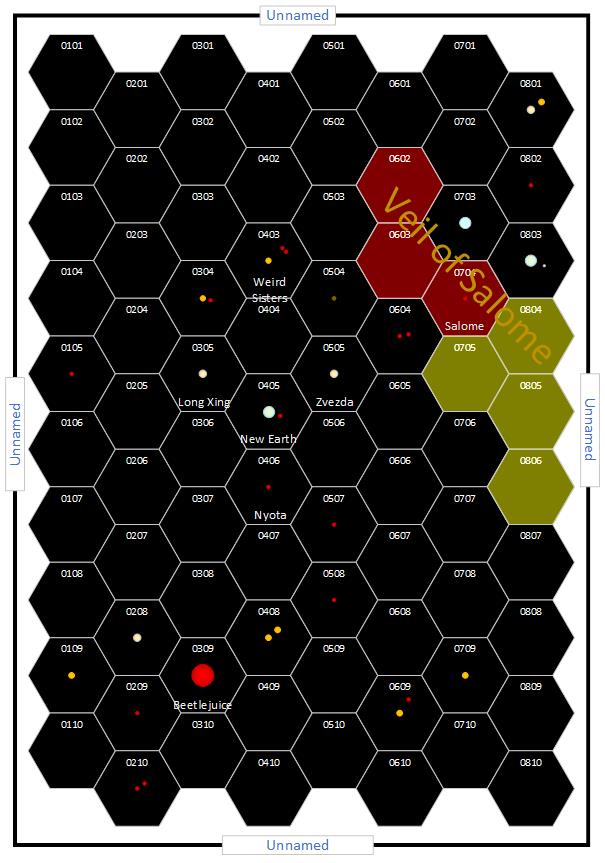Campaign:NHNE/Subsectors/Bright Heavens
| Bright Heavens Subsector (Physical) [Epoch: Year 300] |
|---|
The Bright Heavens is the area of space immediately surrounding the system of New Earth.
By definition, it was discovered in Year 0
Physical Astrography[edit]
The Bright Heavens Subsector is unexplored except for the New Earth System. The Astronomers are a small group that have been primarily concerned with mapping the New Earth System itself. It is only the last 50 years that have really seen the inter-stellar environment mapped, and only very recently that a telescope capable of resolving nearby extra-system planets was launched (although that hasn't been its priority)
Stars and Systems[edit]
The Bright Heavens Subsector probably contains 34 major objects in 24 Systems. These objects are:
- 1 Independent Class T Brown Dwarf
- 16 Class M Main Sequence Stars
- 1 Class M Giant Star
- 8 Class K Main Sequence Stars
- 4 Class G Main Sequence Stars
- 2 Class F Main Sequence Stars
- 1 Class A Main Sequence Star
- 1 White Dwarf
14 of the stars form the 7 Binary Systems and 3 of the stars are part of a 1 trinary one.
The two brightest stars in the subsector are the A class (Luminosity: 30 Sols) and the M Class Giant (Luminosity of approx. 1900 Sols or apparent magnitude of approx. -4.6. i.e. about the same a Venus as seen from Earth.)
Veil of Salome[edit]
Spread across the Bright Heavens Subsector (and just into the adjacent one) and back-lit by an F and an A type Main Sequence Star, is the Veil of Salome. This is a Nebula some 21 light-years long, but only 3-6 light-years across. It does not appear to be sufficiently cold and dense to be forming stars - the one small star known to be within it is just passing through. It is below 100K in temperature and not significantly ionised.
Astronomical Note: It is possible that there is a system at 0804 as that is the deepest part of the nebula and the dust in it obscures that region.
Astronomical History and Expected Futures[edit]
The Bright Heavens Subsector has stars from 5Bn to 12Bn years old. The Class M Giant is relatively old and has been shedding its outer layers for some time. As a consequence it is expected to become a white-dwarf in a relatively short time (in astronomical terms). By contrast the F and A stars, and the K/M binary system at 0304 are relatively young, of similar age and part of a single moving group (the New Earth Moving Group). The origin of the Brown Dwarf at 0504 is obscure as it appears to be on a very different track through the subsector to any other system. It has been postulated, however, that it is a recent escapee from the neighbouring trinary at 0403.

